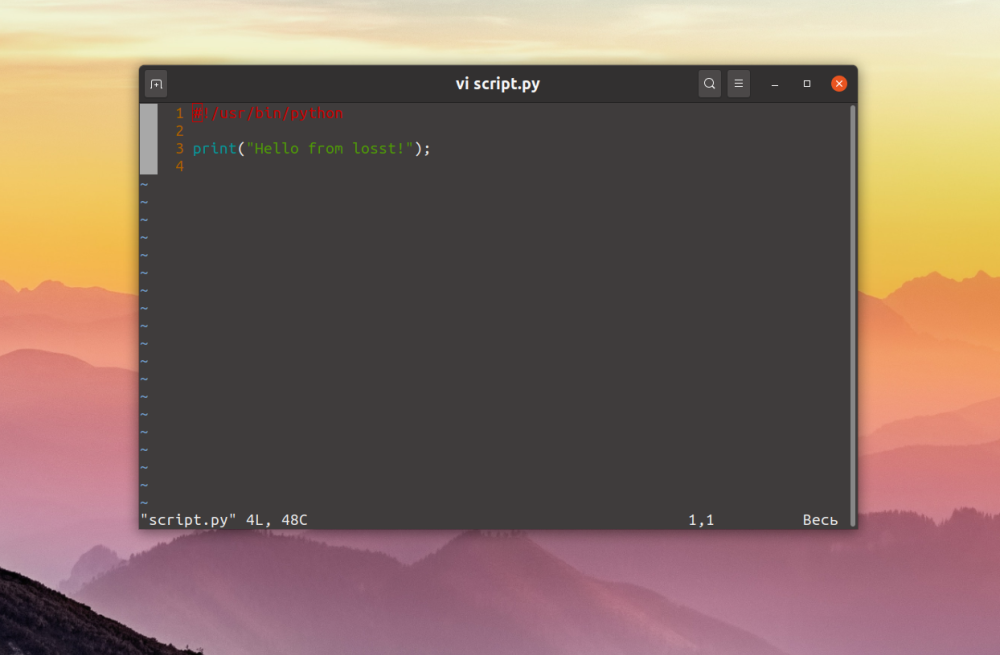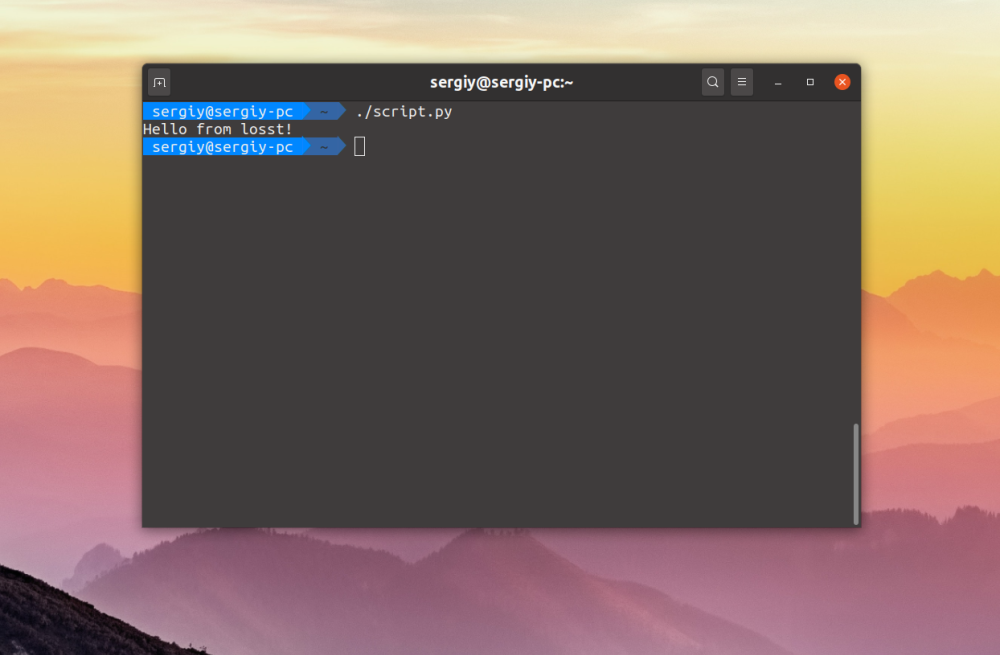-
United Kingdom+44 (20) 4577-20-00
-
USA+1 (929) 431-18-18
-
Israel+972 (55) 507-70-81
-
Brazil+55 (61) 3772-18-88
-
Canada+1 (416) 850-13-33
-
Czech Republic+420 (736) 353-668
-
Estonia+372 (53) 683-380
-
Greece+30 (800) 000-02-04
-
Ireland+353 (1) 699-43-88
-
Iceland+354 (53) 952-99
-
Lithuania+370 (700) 660-08
-
Netherlands+31 (970) 1027-77-87
-
Portugal+351 (800) 180-09-04
-
Romania+40 (376) 300-641
-
Sweden+46 (79) 008-11-99
-
Slovakia+421 (2) 333-004-23
-
Switzerland+41 (22) 508-77-76
-
Moldova+373 (699) 33-1-22
 English
English
How to run a Python script in Linux
- Main
- Knowledge base
- How to run a Python script in Linux
One of the most popular programming languages is Python. It is often used by programmers to write various system scripts for Linux (rent vps server python). For example, if Windows lacks system capabilities, then the program PoweShell is used.
In Linux for such a case, it is the language Python is provided. The peculiarity of Python is that a huge number of system programs are written in it, in particular, the apt manager, the OpenShot video editor, as well as many scripts that you can install using the utility. Next, let's look at how to run a Python script in Linux using the terminal in a variety of ways.
What is a Python script in Linux
A Python script in Linux is a text file containing a program in the Python programming language. Python is an interpreted programming language that is widely used to develop various applications, scripts, and automate tasks.
Python scripts in Linux can perform various tasks such as data processing, file management, networking, creating web applications and many more. They are commonly used to automate routine tasks, manage the system, and create custom utilities and applications.
In order to run a Python script in Linux, you need to have the Python interpreter installed on your system. Usually, Linux already has Python installed by default. To run the script, all you need to do is call the Python interpreter and pass it the path to the script file. For example, if your script is called myscript.py, you can use the python command myscript.py to run it in the terminal.
With Python scripts in Linux, you can automate many tasks, simplify your system and create various useful tools to suit your needs.
Running a Python script
Let's use a Python script as an example. But we will not take an existing one, but create a new one - our own:
$ vi script.py
print("Hello from PqHost!")To run the script you need to pass it to the Python interpreter. To do this, simply open a terminal with the keyboard shortcut Ctrl+Alt+T, navigate to the folder with the script and execute:
$ python script.py
If you want the script to open a console where you can interactively execute Python commands, use the -i option:
$ python -i script.py
As you can see, you don't have to type the word python when running apt or openshot. This is much more convenient. Let's see how to implement it. If you don't want to specify the interpreter on the command line, you should specify it in the script itself. To do this, add a line to the script:
$ vi script.py
#!/usr/bin/python
Save the changes, and then make the script file executable using this command:
$ chmod ugo+x script.pyYou can then run the Python script simply by referring to its file:
$ ./script.py
If you remove the .py extension and move the script to a directory that is in the PATH variable, such as /usr/bin/, you can run it like this:
$ scriptRunning the python Linux command is quite easy and there are even several ways to do it. You can use any of them.






































